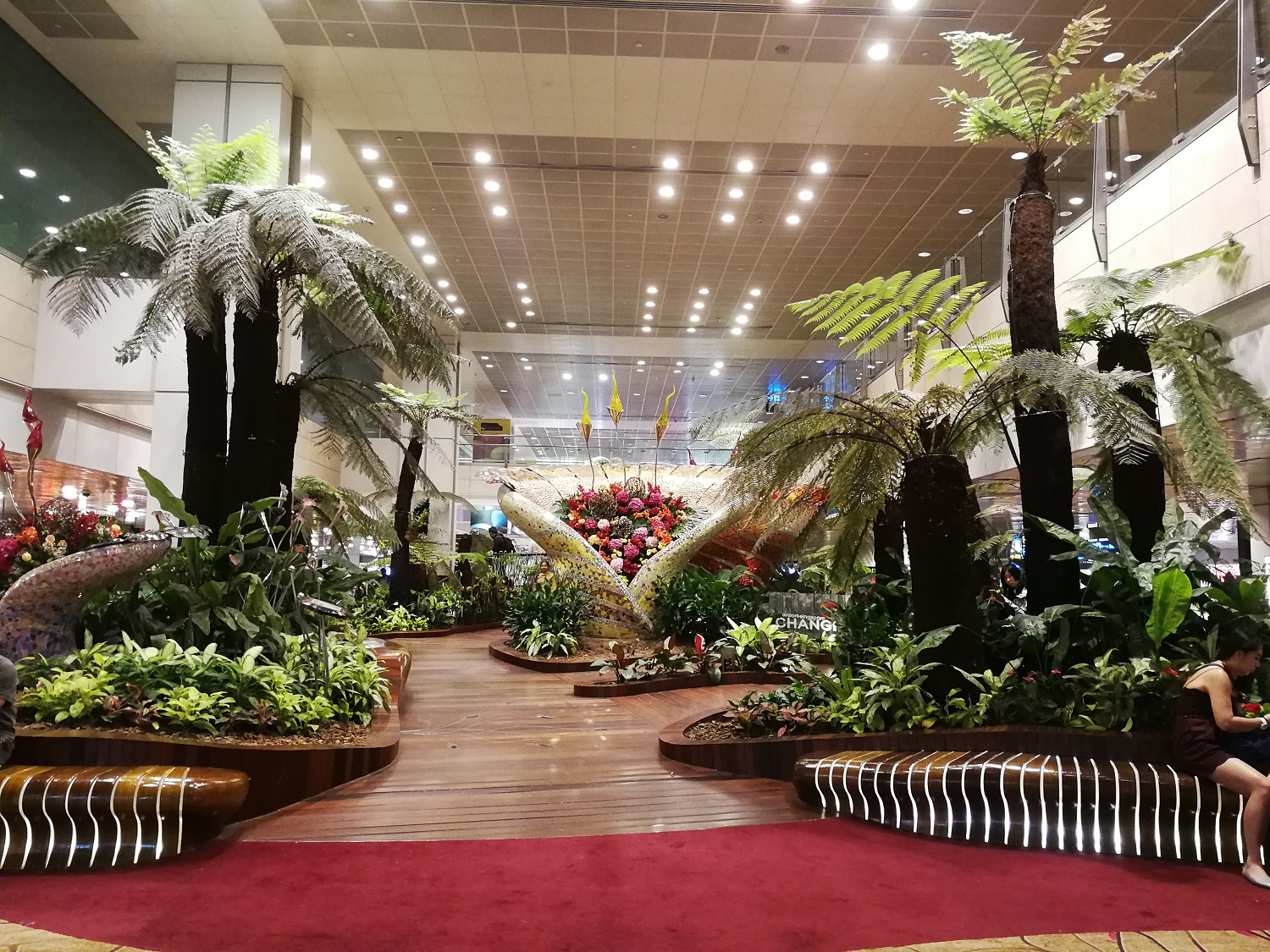Singapore calls itself the “city in a garden”, and I would say rightly so. Changi Airport welcomed me with an indoor botanical display in the middle of the arrival hall, with tropical trees, colourful blossoming flowers and a winding path through the vegetation taking you to a small pond with fish – a stunning sight!
3D Visualisations for Singapore’s Ecosystem Services
by Katharina Henggeler, 29.08.2019

Small botanical garden in the arrival hall of Changi Airport. (photo credit: Katharina Henggeler/ETH Zurich)
Writing my master thesis in this colourful, money-driven, technology- and food-loving cultural hotpot turned out to be an unforgettable life experience.

The view from the pantry outside or office on floor 15 showing the more business-oriented part of the NUS university campus and Singapore beyond it. I usually went there for my late-afternoon break. I would have a hot sweet bun and a yogurt, and I would enjoy the fantastic view or chat with friends from other international research projects. (photo credit: Katharina Henggeler/ETH Zurich)
Later that day, as I explored the streets I realised Singapore is indeed very green for a city of its size. Almost every road is lined with trees, and buildings with vertical vegetation are a common sight. However, this is not by chance. In fact, about 95% of Singapore’s vegetation is managed, and building codes and planning guidelines promoting green buildings have been put in place.
Like many other countries, Singapore realises how important and beneficial its natural assets are. Assessing these assets, the ecosystem services that they provide, and their potential benefits for human wellbeing is precisely the aim of the research project Natural Capital Singapore. The results of this research will feature in a tool that will support decision-making processes.
Exploring different methods of visualising ecosystem services and their trade-offs within a realistic 3D landscape model is my contribution to the development of this tool, as part of my master thesis in the Department of Civil, Environmental and Geomatic Engineering at ETH Zurich. During interviews with researchers, government agencies, and a non-governmental organisation, I gathered the opinion of potential users about which visualisation methods they deem most suitable. The results were as I expected. They varied in particular based on the user group, what situation the visualisations were used in, and on the required scale. I therefore concluded that the tool should ideally provide users with more than one visualisation method.

Screenshot of one of the visualisations created for my master thesis. (photo credit: Katharina Henggeler/ETH Zurich)
Of course, defining your own research topic and working on it in a foreign country and culture is not easy. Nevertheless, I think I learned much more during my 5 months in Singapore than I would have back home. My time there taught me to be more outspoken, to defend my ideas, to be more assertive, to believe in my choices and skills, and to be more courageous in trying out new ideas or unconventional things.
In fact, this experience helped me grow both as a researcher and as a person. I believe that was only possible thanks to the unique mix of freedom, guidance, and encouraging interest and appreciation from the research community at the Singapore-ETH Centre (SEC) and especially the Natural Capital family. I was integrated into the team like a regular researcher and in due course, the persons I worked with also became my friends. Moreover, the SEC is part of the CREATE (Campus for Research Excellence and Technological Enterprise) tower, 16 floors of international interdisciplinary research centres and technology incubators, located on the campus of the National University of Singapore (NUS). Rubbing shoulders with people from all over the world of all kinds of backgrounds and interests, there was no chance it was ever going to get boring.

Almost all members of the amazing NatCap family at the farewell lunch of a colleague. (photo credit: Justine Saunders/ETH Zurich)

About the author
Katharina Henggeler is just about to finish her master’s degree in Geomatics at ETH Zurich. By writing her master thesis at the Singapore-ETH Centre she was able to get a unique insight into Singapore’s research on securing its natural assets, as well as directly contributing to these efforts.
